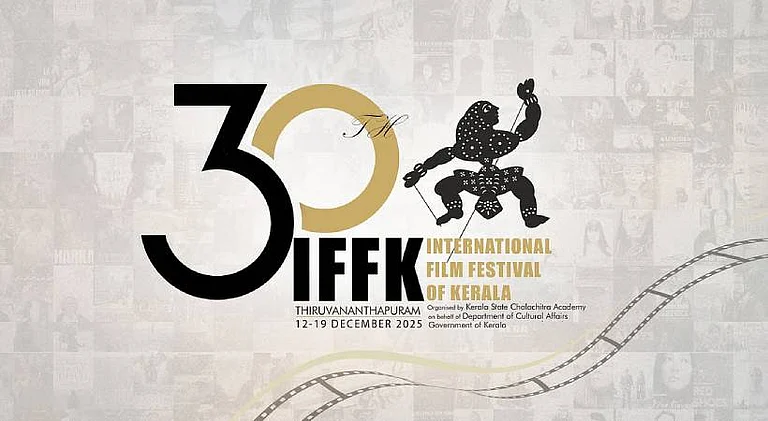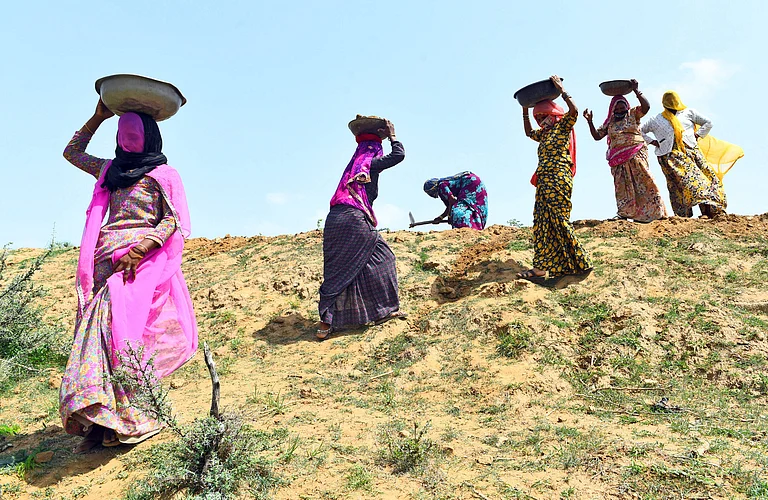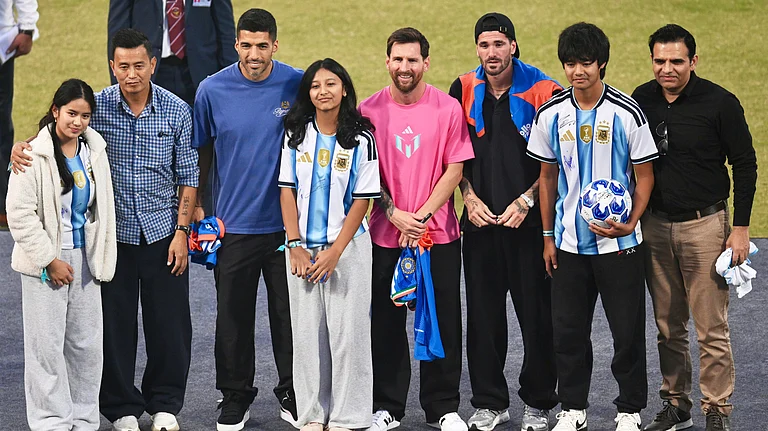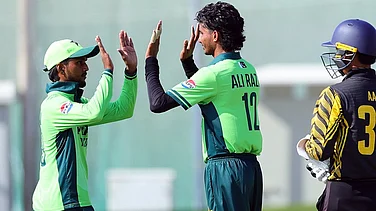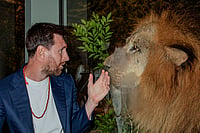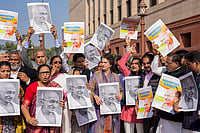The star had been rounded up at a short notice. As he cut the ribbon, he bent towards the writer, asking: "What's the book all about?" Blame him not. So many authors and publishers, aspiring and perspiring, are trying to share the World Cup magic.
Cricket may have none of the bloodcurdling intensity of boxing to produce its Norman Mailers. Or the frenzied pace of soccer to produce the Hemingways. But the longer version has spawned its C.L.R Jameses and the shorter versions are on their way. One-day cricket is too young to boast its own treasure trove. But, it's filling up.
A look at the nearest bookstore says it all. A dozen or more books are trying to cash in on the fever. To start with there are the specific World Cup volumes like Dr Narottam Puri's World Cup 1996 (Indus, Rs 50) rich in stastics and poor in everything else—writing and most importantly, photography. In fact, the most recent photograph of Sachin Tendulkar was when he was 17. Or maybe 16?
Ditto Gulu Ezekiel's The Story of World Cup Cricket (Konark, Rs 50). Barring its price—attractive for a lay cricket follower wanting a dekko at the teams' performance in previous extravaganzas—there is little else to recommend it. Like Puri's books, the photographs are dated and production values poor. A far cry from, say, the Playfair World Cup Guide.
Top publishers like Ashok Chopra of UBSPD admit the appeal of cricket books is limited and the market small. "People are more keen on knowing what's going to happen rather than what's already happened," he says. But there's no denying everyone wants his finger in the pie. Chopra himself is publishing Mohinder Amarnath's Learn to Play Good Cricket (Rs 125), based on the former all-rounder's television series.
The Cup has served as a nice pretext for publishers to reissue old volumes and issue foreign ones at cheap prices—like a revised paperback of Azhar, Harsha Bhogle's glowing biography of the Indian skipper (Penguin); a paperback of Beating the Field,Brian Lara's post-375, post-501 autobiography with Brian Scovell (Partridge Press); and Mike Marqusee's scathing look at English cricket, Anyone But England (Penguin).
Marqusee's books was shortlisted for the British Sportsbook of the Year award in 1994. It is a great read as it charts the decline and the ultimate collapse of English cricket. Penguin editor-publisher David Davidar says another Marqusee book is coming up, Slow Turn, a novel set in Madras during an English team's tour of India.
In the pipeline: a new edition of Spin and Other Turns by academic-author Ramachandra Guha, whom Davidar ranks among India's top two or three cricket writers; Into the Passionate Soul of Subcontinental Cricket, an original, well-written tour of the subcontinent's maidans by writer-photographer Emma Levine whose Cricket: A Kind of Pilgrimage (UBSPD, Rs 595) has received rave reviews. Out this week: Ajit Tendulkar's biography of his brother Sachin (Rs 550); last week: Sunil Gavaskar's biography by West Indian Clifford Narinesingh (Rs 125).
The camaraderie is evident in the rollcall of those who have penned the prologues. Sachin's and Mohinder's books have forewords by Sunil Gavaskar, Lara's and Gavaskar's by Sir Gary Sobers, Sir Don Bradman's by Riche Benaud, Emma Levine's by Mark Tully, Gulu Ezekiel's by Sir Richard Hadlee.
"Oh no, not one more," might be the fan's refrain at the sight of yet another tome on cricket's 'unchallenged shining light' as the New York Times described Sir Don Bradman. But to paraphrase Benaud, the nearest the game has come to producing a televangelist: "There are many books about Bradman, as there should be, because he was the greatest". Between its covers, Images of Bradman (Allen & Kemsley Publishing with The Bradman Museum, Rs 1,400) packs some 400 rare photographs, several of them chronicling his greatest partnership—with Jessie, the childhood love he married.
On the most-overkilled cricketer, there are anecdotes galore. Sample: Sir Don got 21 lines in the 1939 Who's Who, only eight fewer than Hitler, 17 more than Stalin. There's colour. There's classic Aussie humour. Sample: Sir Don calls home at the end of a long tour. "Hello, is that you darling?" Jessie: "Yes, darling, who is that?"
But what the book does most is to show the slipshod manner in which Indian publishers go about their books. No electrifying statistical history here. For that, you'll have to look up Puri's. Query: How many people watched the 1983 World Cup and how much did they pay? Answer: 232,081 spectators and £1,192,712.
Equally enthralling though not boasting such production values is Emma Levine's Cricket: A Kind of Pilgrimage — a tribute to the unsung heroes of subcontinental cricket and Emma's legwork. She goes to the world's highest cricket ground (Chail, 2444.4 metres), the most dangerous (Jaffna) and returns to tell the tale in vivid pictures.
Cricket: A Religion or Sport? asks the venerable Tully. Three Cup weeks and a dozen books later, there's no doubt: it's the globe's most karmic game. Either you're destined to like it, love it, win it, watch it, rave about it and read about it. Or you are not. A fanatic will shell out so many bucks to buy a book. Or he will not.







